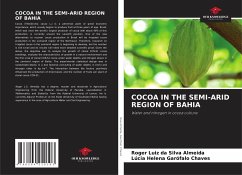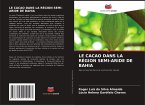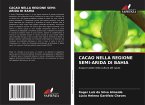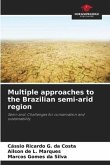Cocoa (Theobroma cacao L.) is a perennial plant of great economic importance, which usually begins to produce fruit at three years of age. Brazil, which was once the world's largest producer of cocoa with about 40% of this production, is currently around the seventh position. One of the new alternatives to recover cocoa production in Brazil will be irrigated cocoa production in the semiarid region of the Northeast. Therefore, research on irrigated cacao in the semiarid region is beginning to develop, but the number is still small and its results still need more detailed scientific proof. Given the above, the objective was to analyze the growth of clonal CCN-51 cocoa seedlings, evaluate the characteristics of growth in a natural environment and the first crop of clonal CCN-51 cocoa under water depths and nitrogen doses in the semiarid region of Bahia. The experimental statistical design was in randomized blocks in a 4x4 factorial consisting of water depths in (mm) and nitrogen rates in kg ha-1. The interaction between the factors positively influenced the production of dried beans and the number of fruits per plant of clonal cocoa CCN-51.








